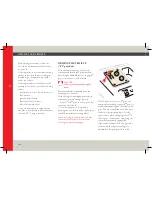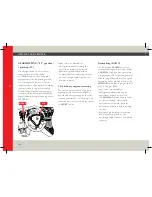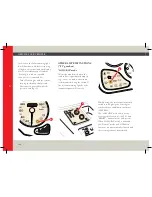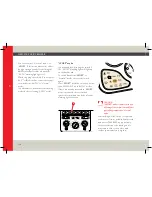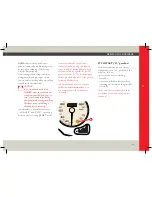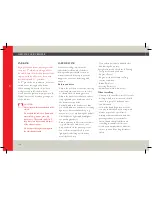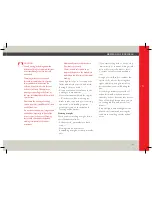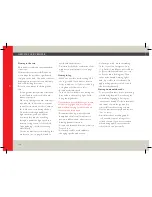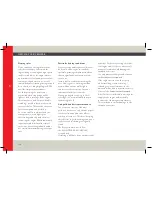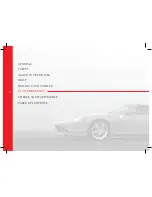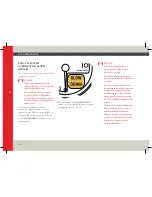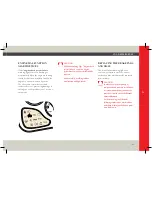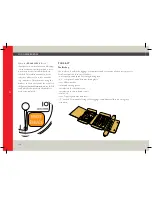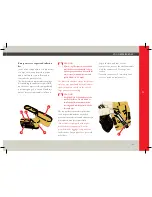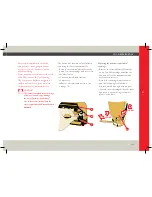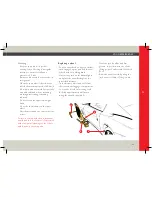
116
5
DRIVING YOUR VEHICLE
Driving in the rain
Rain and wet roads can cause hazardous
situations.
All manoeuvres are more difficult on a
wet road as the tyres have significantly
less grip on the road. This means that the
braking distances increase considerably
and road-holding decreases.
Below is some advice for driving in the
rain:
- Keep a greater safety distance between
yourself and the other vehicles and
reduce your speed.
- When it is raining very hard, visibility is
also reduced. In these cases, to make
yourself more visible to others, turn on
the low beams, even during the day.
- Do not drive through puddles at
high speeds as you do not know
how deep they may be: travelling
through a puddle at high speed can
result in losing control of the vehicle
(“aquaplaning”). Hold the steering
wheel firmly.
- Use the ventilation system to defog the
windscreen (see on page 83) and to
avoid visibility problems.
- Periodically check the conditions of the
windscreen wiper blades (see on page
153).
Driving in fog
- Whenever possible, avoid setting off if
the fog is thick. If you have to drive in
misty conditions, or if there is thick fog
or fog banks, follow these rules:
- Keep a moderate speed.
- Turn on the low beams, also during the
day, and use the rear fog light. Avoid
using the high beams.
On stretches where visibility is good, turn
off the rear fog light as it is very bright
and may be annoying for the occupants
of the vehicles behind you.
- Remember that fog makes the road
damp and therefore all manoeuvres
are more difficult and, what is more,
braking distances increase.
- Keep a safe distance from the vehicle in
front of you.
- As far as possible, avoid suddenly
changing speed and direction.
- As far as possible, avoid overtaking.
- In the event of an emergency stop,
(e.g., failures, inability to proceed due
to poor visibility conditions, etc.) try
to free the main driving lane. Then
turn on the hazard warning lights
and, if possible, the low beams. On
approaching another vehicle, sound
the horn rhythmically.
Driving on mountain roads
- To prevent the brakes from overheating
when driving downhill, use the engine
to brake by engaging a lower gear.
- Never coast downhill or drive downhill
in neutral, or with the ignition key
removed from the steering column.
- Drive at a moderate speed and do not
“cut” corners.
- Remember that overtaking uphill
is slower and requires a longer free
stretch of road. If you are overtaken
when driving uphill, ensure that the
other vehicle can pass easily.
Summary of Contents for 575M Superamerica
Page 1: ...Owner s Manual ...
Page 2: ......
Page 11: ...11 1 1 2 3 4 5 GENERAL ...
Page 19: ...1 ...
Page 34: ...34 3 ABOUT YOUR VEHICLE POSITION OF THE MAIN CONTROLS IN THE VEHICLE ...
Page 85: ...3 ...
Page 119: ...5 ...
Page 147: ...6 ...
Page 159: ...7 ...
Page 161: ...8 TABLE OF CONTENTS ...
Page 165: ...8 ...



